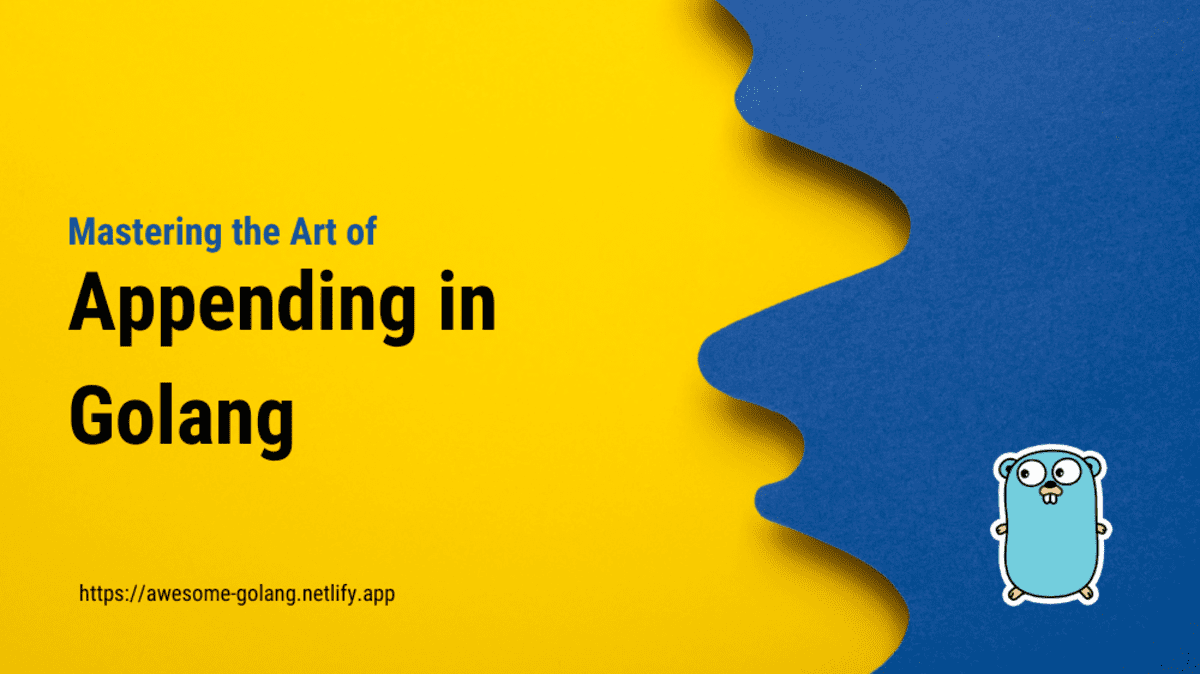A Comprehensive Guide toMastering the Art of Appending in Golang: A Comprehensive Guide
- With Code Example
- August 21, 2023


Introduction
In the realm of Golang programming, the append operation stands as a versatile tool that empowers developers to dynamically expand slices, arrays, files, and strings. In this formal blog post, we embark on a journey to delve into the intricacies of appending in Golang. Through practical examples and active voice, we will uncover the art of seamlessly integrating new elements into various data structures.
Appending to Slices
Slices, a fundamental data structure in Golang, can be easily expanded using the append function. Let’s explore how this operation works and discover its utility in real-world scenarios.
package main
import "fmt"
func main() {
numbers := []int{1, 2, 3}
numbers = append(numbers, 4, 5)
fmt.Println("Updated slice:", numbers) // Output: Updated slice: [1 2 3 4 5]
}
Appending to Arrays
Although arrays have fixed sizes in Golang, you can leverage append to overcome this limitation by creating new slices. Let’s unravel how to achieve dynamic expansion with arrays.
package main
import "fmt"
func main() {
array := [3]int{1, 2, 3}
slice := append(array[:], 4, 5)
fmt.Println("Updated slice:", slice) // Output: Updated slice: [1 2 3 4 5]
}
Appending to Files
Appending data to files is a common operation in many applications. Learn how to seamlessly add content to existing files using Golang’s ‘os’ package.
package main
import (
"os"
"log"
)
func main() {
file, err := os.OpenFile("data.txt", os.O_APPEND|os.O_WRONLY, os.ModeAppend)
if err != nil {
log.Fatal(err)
}
defer file.Close()
content := []byte("New data to append\n")
_, err = file.Write(content)
if err != nil {
log.Fatal(err)
}
}
Appending to Strings
Golang strings are immutable, but you can efficiently append content using the ‘+= ’ operator or the ‘strings’ package. Let’s explore both approaches.
package main
import (
"fmt"
"strings"
)
func main() {
str := "Hello, "
str += "World!"
builder := strings.Builder{}
builder.WriteString("Hello, ")
builder.WriteString("World!")
fmt.Println("Appended string:", str) // Output: Appended string: Hello, World!
fmt.Println("Built string:", builder.String()) // Output: Built string: Hello, World!
}
Conclusion
Congratulations! You’ve delved into the world of Golang’s ‘append’ operation, mastering the art of seamlessly integrating elements into slices, arrays, files, and strings. Armed with practical examples and a formal tone, you now possess the knowledge to dynamically expand your data structures and optimize your code’s flexibility. Harness the power of ‘append’ to elevate your Golang programming to new heights.
Meta Description: Enhance your Golang programming skills by mastering the versatile ‘append’ operation. Learn how to add elements to slices, arrays, files, and strings with practical examples. Dive into this formal blog to elevate your coding prowess.







